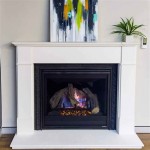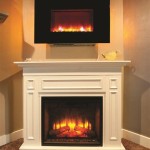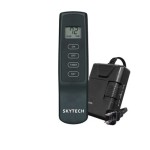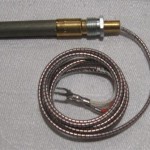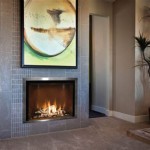Masonry Fireplace Inserts: Optimizing Efficiency and Aesthetics
Masonry fireplaces, traditionally valued for their aesthetic appeal and contribution to home ambiance, often suffer from poor energy efficiency. A significant portion of the heat generated escapes through the chimney, leading to increased heating costs and reduced comfort levels. A masonry fireplace insert offers a practical solution to mitigate these issues, providing improved heating performance while retaining the charm of a traditional fireplace.
A fireplace insert is a self-contained heating appliance designed to be installed within an existing masonry fireplace opening. Unlike open fireplaces, inserts are designed for closed combustion, significantly improving heating efficiency by containing and radiating heat into the room rather than losing it up the chimney. They are available in various fuel types, including wood, gas, and electric, offering flexibility to homeowners based on their preferences and access to fuel sources.
Understanding the Functionality of Masonry Fireplace Inserts
The core function of a masonry fireplace insert is to convert the fireplace from an inefficient heat loss point into a functional heating appliance. This is achieved through several key design features. Firstly, the insert is sealed within the fireplace opening, preventing the uncontrolled airflow that characterizes open fireplaces. This controlled combustion process allows for more complete burning of the fuel, maximizing heat output and minimizing emissions.
Secondly, fireplace inserts are typically constructed from steel or cast iron, materials known for their excellent heat retention and radiation properties. The insert absorbs heat from the burning fuel and radiates it into the room, providing a more consistent and effective heating solution. Many inserts also incorporate a blower fan to further distribute heated air throughout the space, enhancing their heating capacity.
Thirdly, a dedicated flue liner is installed within the existing chimney to vent exhaust gases safely and efficiently. This liner creates a sealed pathway for combustion byproducts, preventing them from leaking into the home and improving overall chimney performance by reducing creosote buildup in wood-burning models or corrosion from acidic gas combustion byproducts. The proper installation of a flue liner is crucial for the safe and efficient operation of the fireplace insert.
Types of Fireplace Inserts: Fuel Options and Their Characteristics
The choice of fuel type for a fireplace insert is a significant decision, impacting heating costs, environmental impact, and convenience. The three primary fuel options are wood, gas, and electric, each with its distinct advantages and disadvantages.
Wood-burning inserts offer the traditional appeal of a wood fire, providing a natural ambiance and a supplemental heating source. They require a readily available supply of seasoned wood and regular tending to maintain the fire. While wood-burning inserts can be highly efficient, they also produce emissions that contribute to air pollution, necessitating proper installation and maintenance to minimize environmental impact. Regular chimney cleaning is also essential to prevent creosote buildup and potential chimney fires.
Gas fireplace inserts provide a convenient and readily available heating solution. They operate on either natural gas or propane, offering push-button ignition and thermostatically controlled heat output. Gas inserts are generally cleaner-burning than wood-burning models and require less maintenance. However, they are dependent on a gas supply and may be more expensive to operate than wood-burning inserts, depending on local gas prices.
Electric fireplace inserts offer the simplest installation and operation. They require only a standard electrical outlet and provide instant heat with adjustable settings. Electric inserts are the most environmentally friendly option, producing no emissions. However, they typically have lower heat output compared to wood or gas inserts and may be more expensive to operate depending on electricity costs.
Key Considerations for Selecting and Installing a Fireplace Insert
Selecting and installing a fireplace insert involves careful consideration of several factors to ensure optimal performance, safety, and aesthetics. It is imperative to consult with a qualified professional to assess the existing fireplace structure and determine the appropriate insert size and type.
The size of the fireplace opening is a primary factor in determining the appropriate insert size. The insert must fit comfortably within the firebox while allowing for adequate airflow and proper flue connection. An oversized insert can restrict airflow and lead to overheating, while an undersized insert may not provide sufficient heat output for the space.
The condition of the existing chimney is another crucial consideration. A thorough chimney inspection should be conducted to identify any structural damage, creosote buildup, or obstructions. Any necessary repairs or cleaning should be performed before installing the insert. A properly sized and installed flue liner is essential for safe and efficient venting of combustion gases.
Local building codes and regulations must also be considered. Permits may be required for fireplace insert installation, and compliance with safety standards is essential. A qualified professional can ensure that the installation meets all applicable requirements and regulations.
Furthermore, the aesthetic design of the insert should complement the existing fireplace and the overall décor of the room. Fireplace inserts are available in various styles, from traditional to contemporary, to match different aesthetic preferences. The finish, trim, and door design should be carefully considered to achieve a cohesive and visually appealing result.
Benefits of Installing a Masonry Fireplace Insert
Installing a masonry fireplace insert offers several tangible benefits, improving energy efficiency, enhancing heating performance, and increasing home value. By addressing the inherent inefficiencies of traditional masonry fireplaces, inserts provide a practical and cost-effective solution for homeowners seeking to optimize their heating systems.
Improved energy efficiency is a primary benefit of fireplace inserts. By containing and radiating heat into the room, inserts significantly reduce heat loss up the chimney, leading to lower heating costs and reduced energy consumption. This improved efficiency can result in substantial savings on heating bills over the long term.
Enhanced heating performance is another key advantage. Fireplace inserts provide a more consistent and controllable heat source compared to open fireplaces. They can effectively heat a designated area, providing supplemental heating during cold weather. The ability to control the heat output allows for customized comfort levels and reduced reliance on central heating systems.
Increased home value is also a potential benefit. A well-installed fireplace insert can enhance the aesthetic appeal of the home and add a desirable feature for potential buyers. The improved energy efficiency and heating performance can also be attractive selling points, potentially increasing the home's market value.
In addition to these tangible benefits, fireplace inserts also contribute to improved safety and environmental responsibility. By controlling combustion and venting exhaust gases safely, inserts reduce the risk of chimney fires and carbon monoxide poisoning. The use of cleaner-burning fuel options, such as gas or electric, can also reduce emissions and contribute to cleaner air quality.
Maintenance and Care for Fireplace Inserts
Proper maintenance and care are essential for ensuring the long-term performance, safety, and efficiency of a fireplace insert. Regular cleaning, inspection, and professional servicing are necessary to prevent problems and maintain optimal operation.
Regular cleaning is crucial for removing ash, creosote, and other debris that can accumulate inside the firebox and flue. The frequency of cleaning depends on the fuel type and usage patterns. Wood-burning inserts require more frequent cleaning than gas or electric models. It is recommended to clean the firebox regularly and have the chimney inspected and cleaned annually by a qualified professional.
Regular inspection is also important for identifying any potential problems, such as cracks, leaks, or damaged components. The firebox, flue liner, and blower fan should be inspected periodically for signs of wear and tear. Any necessary repairs or replacements should be performed promptly to prevent further damage and ensure safe operation.
Professional servicing is recommended at least once a year to ensure that the fireplace insert is operating correctly and efficiently. A qualified professional can perform a thorough inspection, clean the components, and make any necessary adjustments or repairs. This regular servicing can help to extend the lifespan of the insert and prevent costly repairs in the future.
For gas fireplace inserts, it is important to have the gas lines and connections inspected regularly for leaks. A qualified gas technician should perform this inspection to ensure safe operation and prevent gas leaks. Similarly, electric fireplace inserts should be inspected for any electrical problems, such as damaged wiring or overheating components.
Following the manufacturer's recommendations for operation and maintenance is also essential. The user manual provides valuable information on proper usage, cleaning procedures, and troubleshooting tips. Adhering to these recommendations can help to ensure safe and efficient operation and prevent damage to the fireplace insert.

How Can I Tell If My Fireplace Is A Insert

Fireplace Inserts Everything You Need To Know Full Service Chimney

Temp Cast Indoor Masonry Fireplace And Oven Combo Patio Outdoor Furnishings

Wood Fireplace Insert Into Masonry Custom Fireside

Fireplace Inserts Butler Pa Martin S And Service

Fireplace Insert Basics Portland Or American Chimney

Fireplaces Vs Inserts Dc Area Fireplace Service

A Step By Guide To Understanding Fireplace Inserts

What Kind Of Benefits Can A Fireplace Insert Provide

Wood Fireplace Insert Into Masonry Custom Fireside
Related Posts


